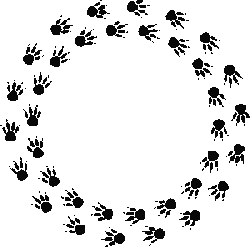|
[Front Page] [Features] [Departments] [SGAP Home Page] [Subscribe]

First Cuttings..an Editorial Rant!

1st Anniversary!
It seems like a matter of just a few weeks since this publication was launched into cyberspace with a great deal of uncertainty as to how it would be received. Well, here we are 12 months down the track and still going. The response has been very positive; by no means overwhelming but reasonable for a niche publication. At this stage we have about 250 subscribers and around 1000 people accessing at least part of each issue.
A lot of people have asked for specific articles and we will endeavour to cater for these requests. The next issue should see the first articles prepared specifically for APOL - the start of a trend, perhaps? However, as most of the material will continue to come from various SGAP publications, it may not be possible fully cover all of the requested topics. Which leads on to another issue......

If It's Old, Is It Any Good?
The material presented in the first 5 issues of APOL ranges from less than 1 to over 15 years old. The older material has not been chosen because of a lack of anything else, it's been chosen because it covers topics that are being dealt with in a particular issue and because I believe the material is still relevant today, even if a few botanical names may have changed in the intervening years.
Of course, I could hide the fact that some material is quite old by not publishing the dates of publication. But I think readers probably like to know this. Anyway, if you have any strong views about the use of older material, let me know.

Too Much of a Good Thing???
The following short item from the newsletter of the Garden Design Study Group grabbed my attention. It's a problem most of us don't have.......

"If people want to know about attracting wildlife to gardens, I'll give you my mother's name and address! The early euphoria of discovering koalas breeding in her garden a few years ago has rapidly evaporated. My mother's large country garden is now so overrun by koalas, possums, bush rats and swamp rats, not to mention lots of snakes, that forty years of planting of Australian natives are being decimated and she has had top build wire cages in order to be able to have a few fresh herbs and vegetables in her cooking. Many of the large eucalypts are dead or dying because of leaf defoliation from more and more koalas. Thank goodness she doesn't have kangaroos or wallabies too".
Cheree Densley

....on the Other Hand!
The Sydney Daily Telegraph of January 10, 1996 reported that an increase in the variety of birds visiting Sydney gardens. This is believed to be largely due to the maturity of native plants which were planted 10-20 years ago when the trend to native or partly native gardens commenced in earnest and when local councils increased the number of native species in public landscaping. Up to 60 different bird species can be observed on a good day, feeding on nectar and insects. Honeyeaters, parrots, lorikeets and rosellas are becoming much more common in suburbia.
Among those areas recommended for birdwatching are the Royal Botanic Gardens, Centennial Park, Bicentennial Park at Homebush Bay and Cumberland State Forest at Pennant Hills.

RCV - A Boon for Native Flora?
The potential control of rabbit populations in Australia through the release of Rabbit Calicivirus Disease (RCV) has had a fairly mixed press coverage since the virus escaped from a research facility in South Australia. On the one hand farmers and graziers look to the restoration of vast areas of their properties as the disease takes hold. On the other are some scientists and conservationists who are concerned about the possible translocation of the virus into native animals.
Controlled releases of RCV are now occurring and, while it is to early to make judgements on the success or otherwise of the virus in reducing rabbit numbers, there have been some very positive results for native plant species.
The Sydney Morning Herald of December 19, 1996 reported some of the potential plusses and minuses of reduced rabbit numbers:
- "Weeds may spring up, the balance of various plant communities will alter and some native plant and animal species may be renewed."
- "For woody plant species.....it will be the first time since the 1950s, when myxomatosis swept through, that many of these plants get past the seedling stage."
- ".....control of rabbits, could also see - however briefly - mass sproutings of the seeds of rarer herbs, which have remained ungerminated beneath the ground."
- "...the impact of removing rabbits from the ecosystem is unpredictable as the lives of rabbits, cats, foxes and native animals have become so interwoven......Perhaps we will see an initial big hit on small native fauna."

Wollemi Pine - an Update
The story of the discovery of the Wollemi Pine (Wollemia nobilis) has been told so often that it's almost becoming "old hat" so I don't intend to repeat it here. Anyone who wants to know more can find details at:
An interesting aspect regarding the Wollemi pine is that the Botanic Gardens at Mt Annan has had excellent results in propagating the plants and have recently called for expressions of interest from commercial nurseries interested in helping to bring the plants to market. The aim is to make plants readily available to reduce the threat posed by wild collecting. Staff at the Gardens have been displaying some of the early propagated plants at a number of venues over the past six months and they certainly seem to be robust and quick growing. It's being suggested that plants might be available to the general public as early as next year.
Until next time...good growing.
Brian Walters

[Front Page] [Features] [Departments] [SGAP Home Page] [Subscribe]
Australian Plants online - March 1997
The Society for Growing Australian Plants
|